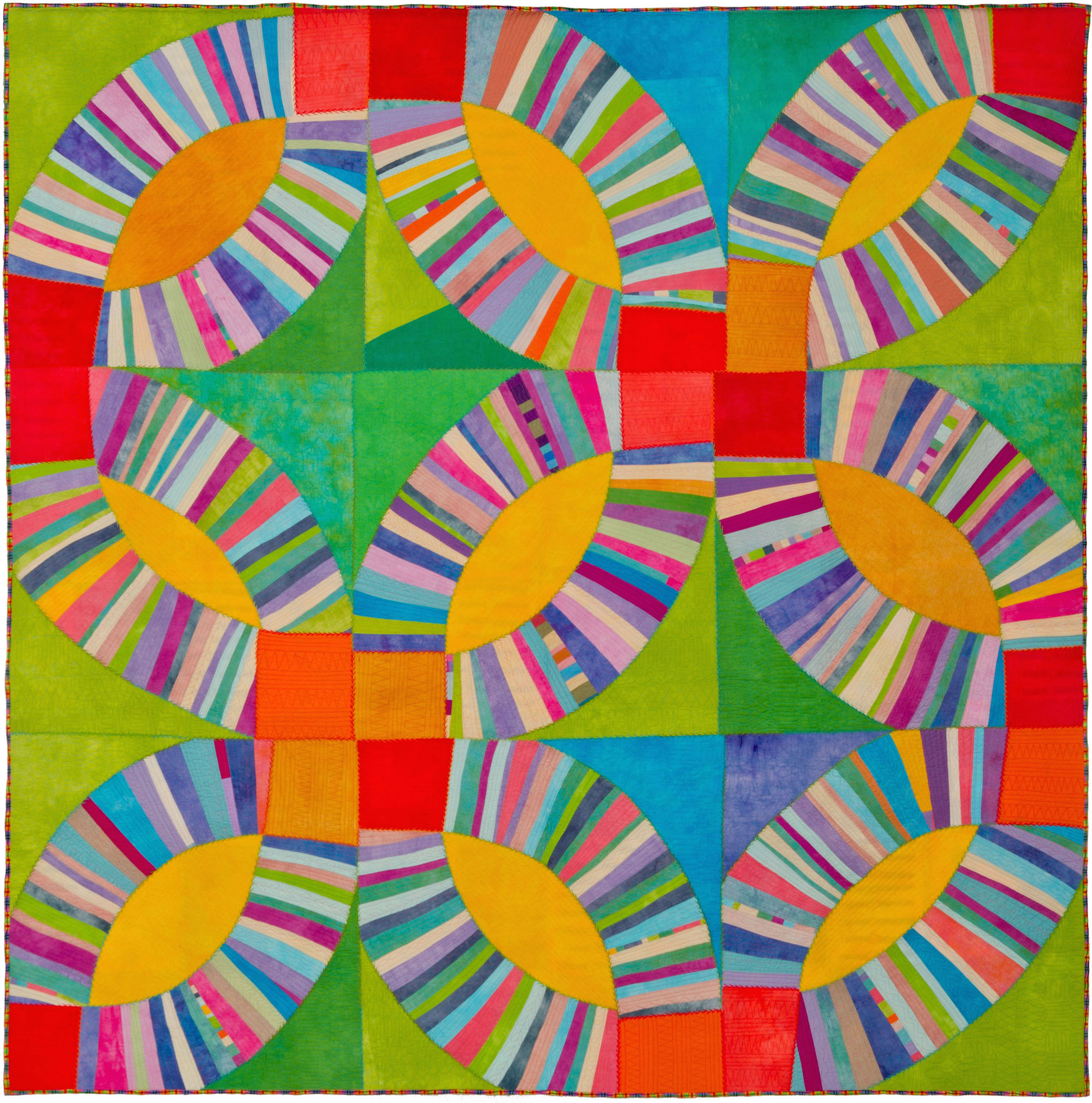
Keiko Goke: An Artist’s Eye for Color
by
Teresa Duryea Wong
Keiko Goke is a Japanese artist who first began making quilts in the early 1970s. She is a self-taught quiltmaker and has paved her own path from day one. Her artistic quilts are filled with color and a sense of whimsy and they often tell a powerful story or capture a happy moment.
Many of her quilts are infused with hand embroidery or embellishments, but they are quilted on a machine, a fact which has been part of her construction method since her first quilt. Her machine quilting, especially in the early days, clearly set her apart from her contemporaries in Japan and she has been influential in attracting a new generation of quilters who are inspired by modern sewing and quilting techniques.
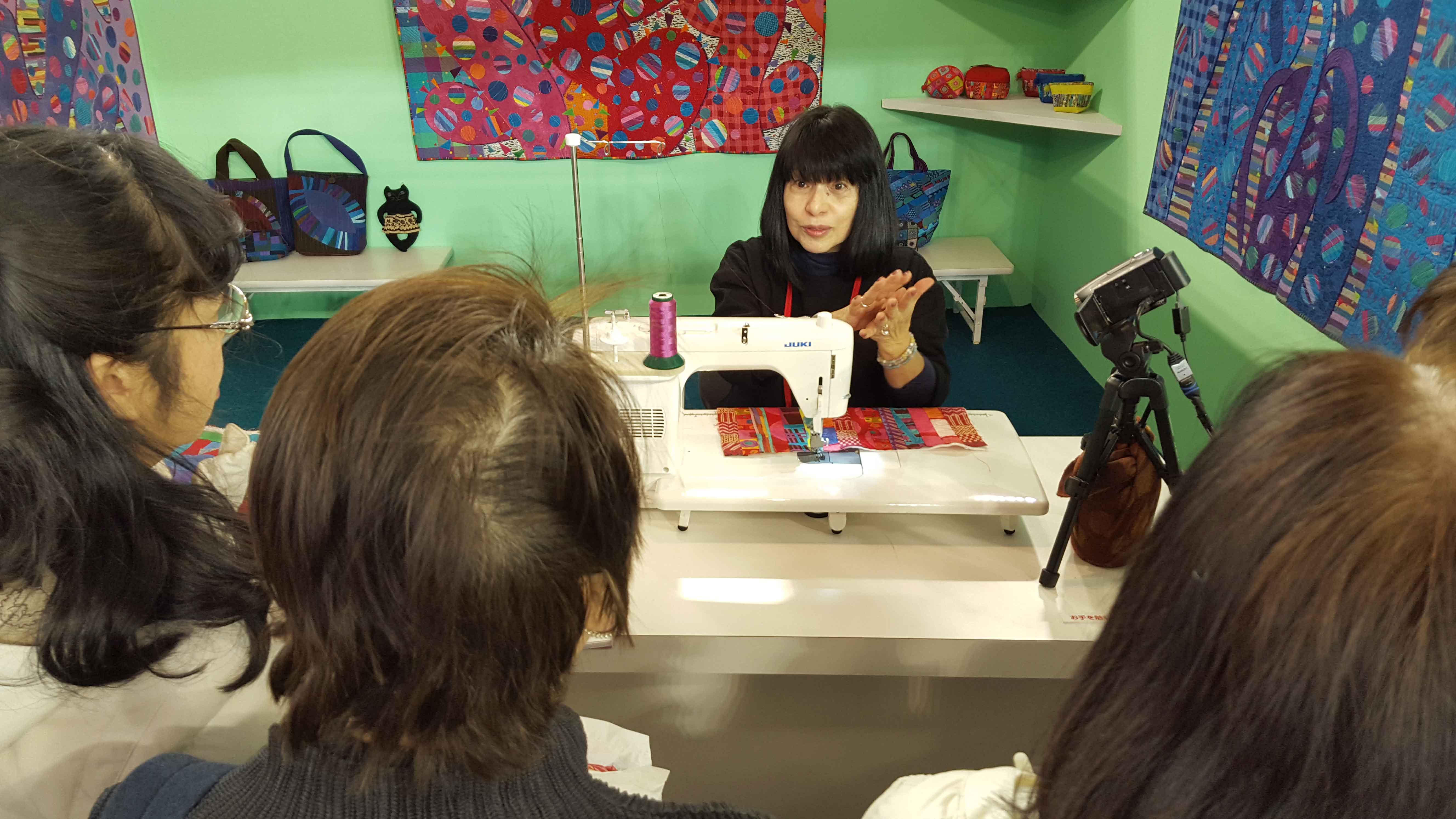
She actively teaches a dedicated group of students from her studio in Sendai, and she also travels and teaches internationally. Her quilts have been exhibited in many prominent international exhibitions, including the International Quilt Festival in Houston and the Quilt National competition in Ohio, and of course, the Tokyo International Great Quilt Festival. In fact, each year she hosts a booth at this massive quilting event and many quilters make a direct line to her booth to quickly purchase collections of her commercially printed cotton quilting fabrics. The popularity of these fabrics have helped spread Keiko’s reputation among quilters worldwide.
Keiko designs her fabric the old-fashioned way, on paper, not on a computer. Her commercial fabrics are executed exactly as she imagines them, with an acute replication of the original texture. By manipulating her Japanese-oil pastel sticks, pencils, paints and other mediums, she can completely control her image by blending colors and creating soft edges.

Her designs are so complex that in order to replicate these on fabric, the process sometimes requires printing one color on top of another, known as over-printing. In addition, some designs can also require removing color, a complicated tactic known as discharge. When layers of color are over-printed, some traces of color can be discharged in order to create an entirely new and unusual hue. Furthermore, an additional requirement for some of her fabric collections is the need for far more than the standard 15 colors that can be printed in one production run, so this means a few fabrics go through a second round of automated screen printing.
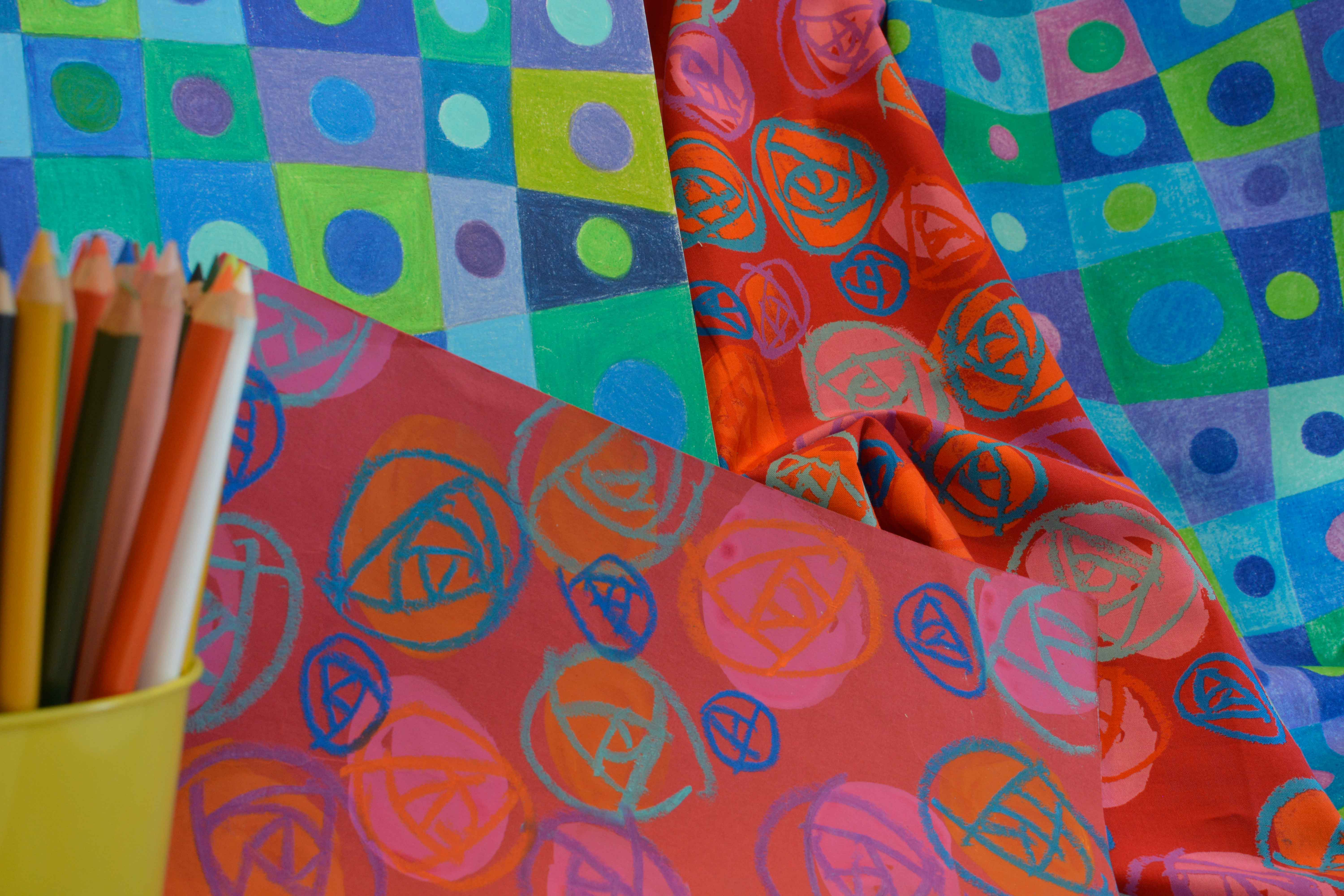
These soft edges, vibrant color blends, and discharge effects are not easy to print, and are certainly not inexpensive to replicate. But Keiko is an artist who does not compromise. Fortunately, she found a production partner that understands and appreciates her aesthetic and is willing to undergo these extra steps to produce her stunning fabrics. That partner is Yuwa Shoten (based in Osaka).
Keiko Goke has an extraordinary sense of color. She is often asked to explain her use of color and in fact, this is the one question she gets most often from students or new people she meets, and she is loath to answer. This is because her color sense comes naturally. Just like a musician who can improvise her own music, Keiko Goke can create her own world of color. She does not over think it and she cannot explain it.


Occasionally, Keiko will use her commercial fabrics in her own studio quilts. One such quilt, To Tomorrow, incorporates her prints into the background. Her quilting lines are thoughtfully placed and the hand embroidery adds texture and color. To Tomorrow is a bright work that is filled with movement and conveys a sense of joy, which are hallmarks of her work. See her newest Free Spirit collection How Do You Do? (available in August 2018).
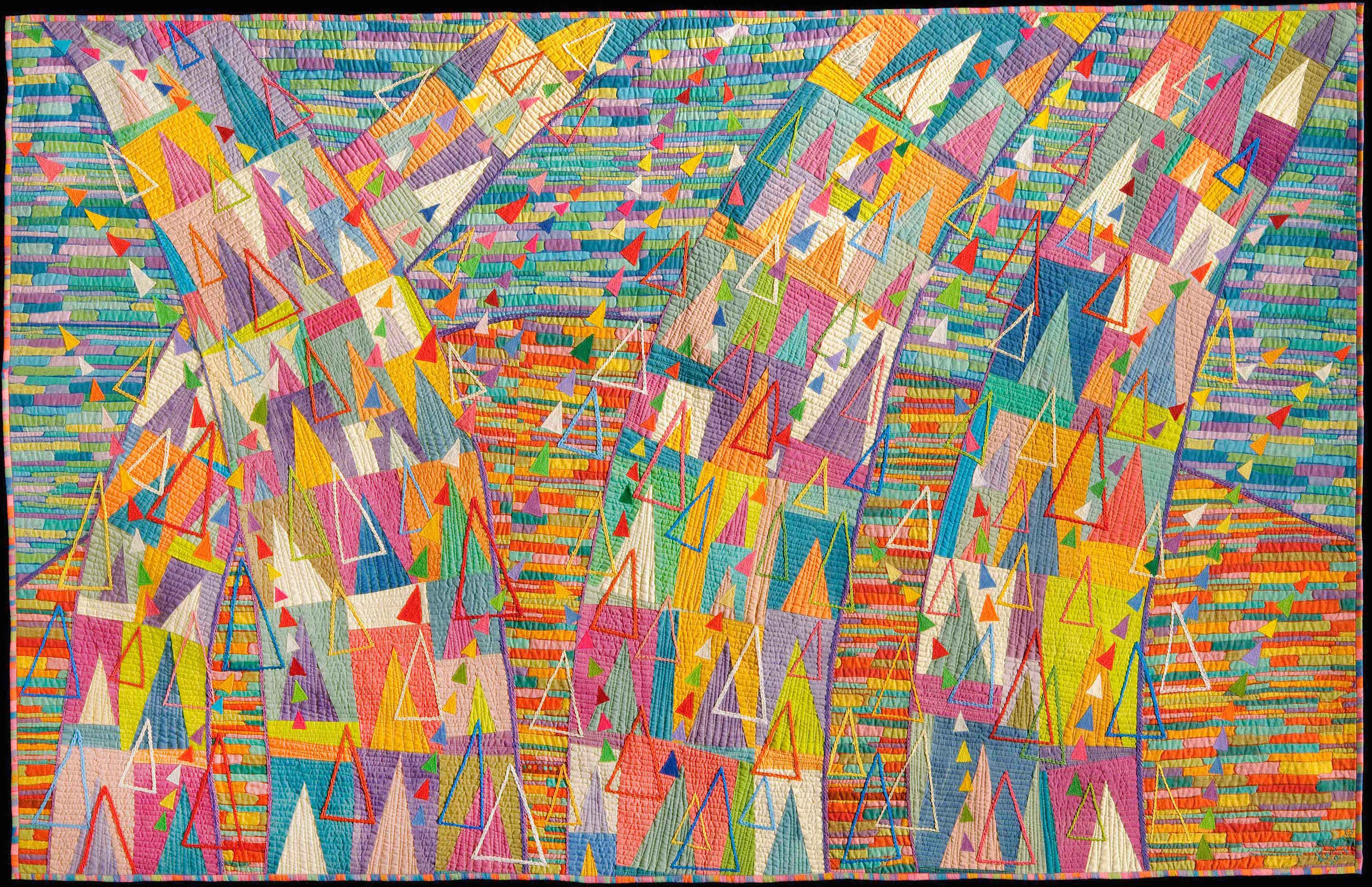
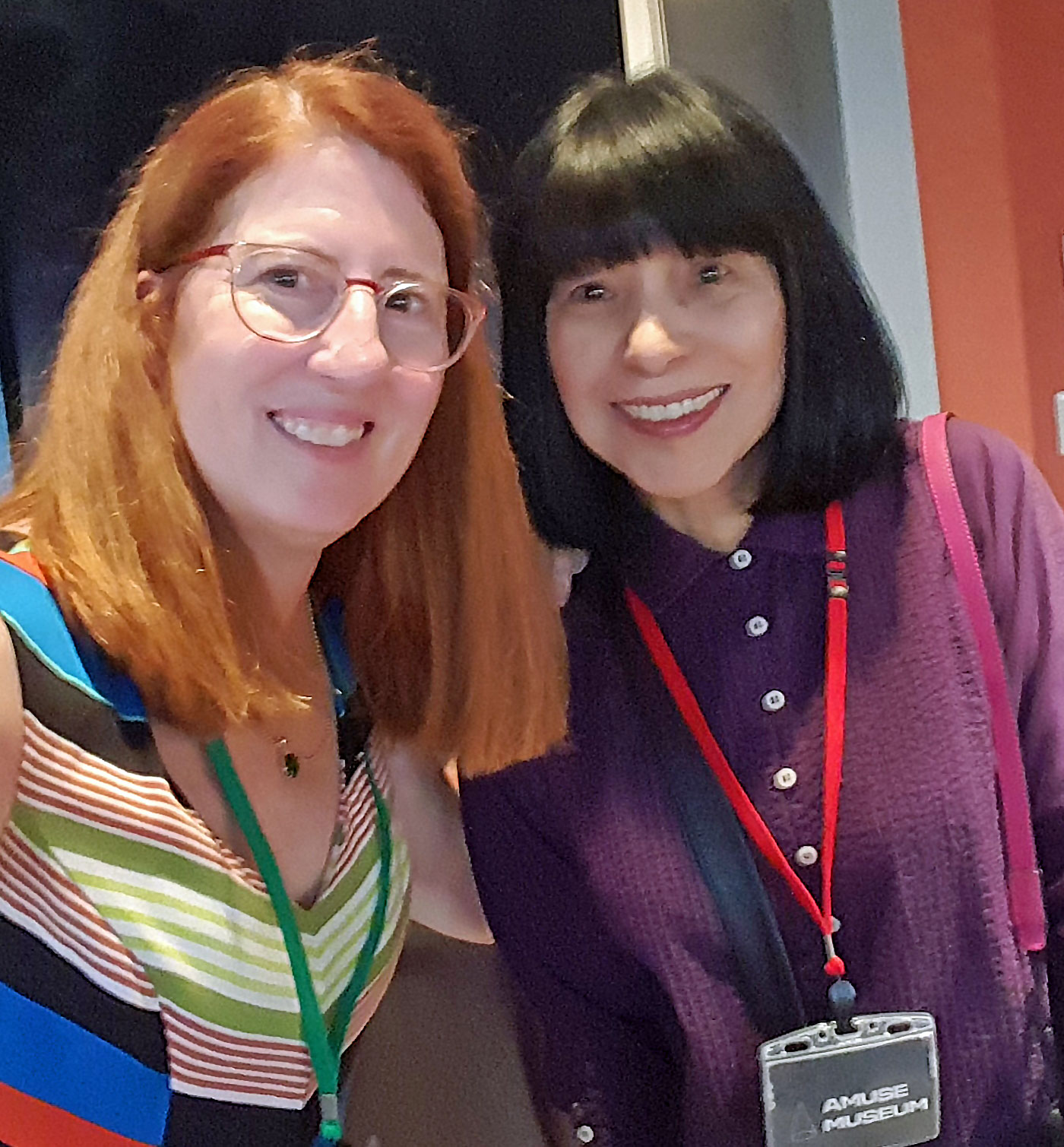
For further reading, Teresa's books, Cotton & Indigo from Japan and Japanese Contemporary Quilts and Quilters, offer great insight into the Japanese quilt esthetics and methods. Autographed copies are available on the author’s website: teresaduryeawong.com.




.jpg)


